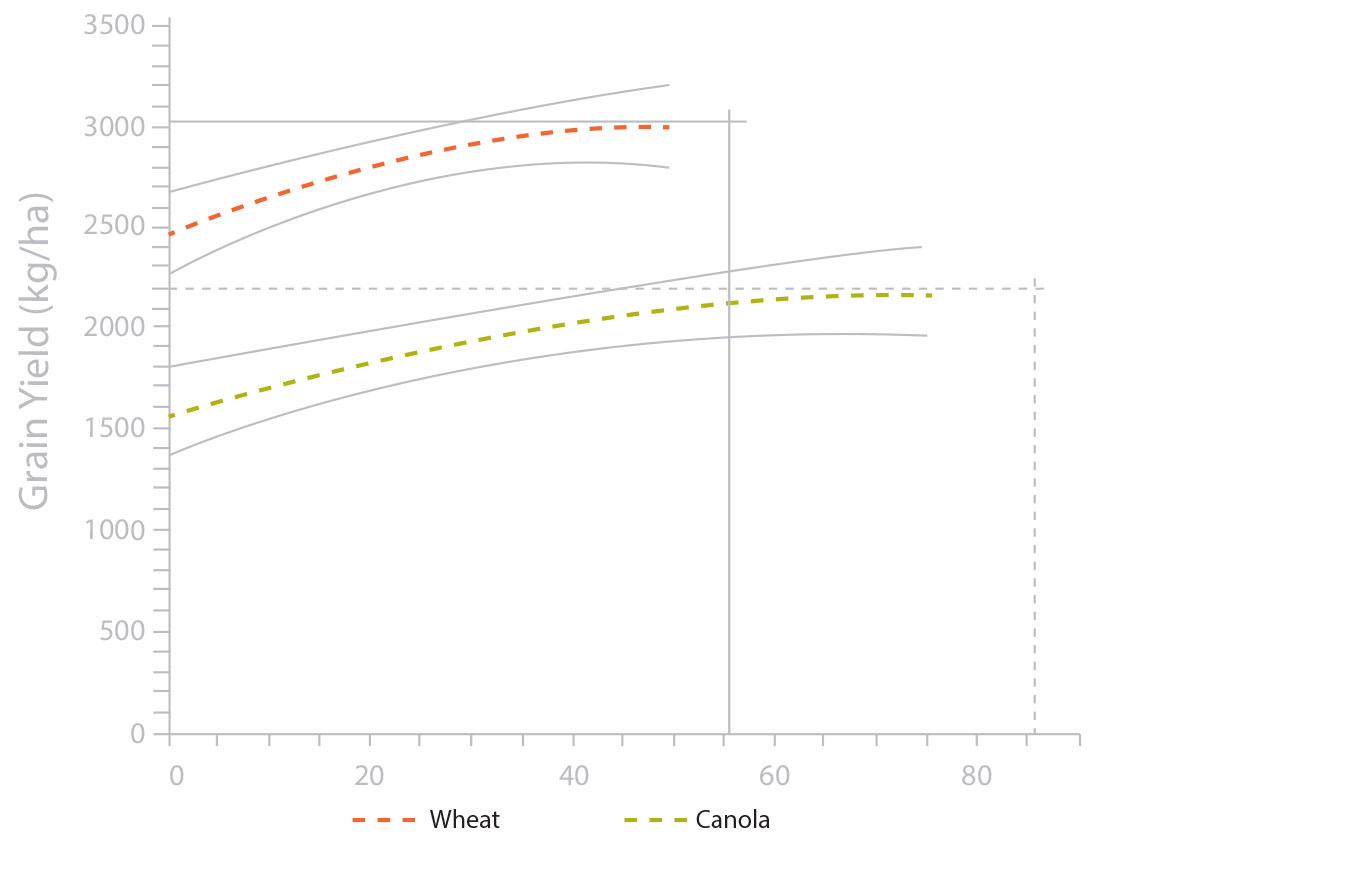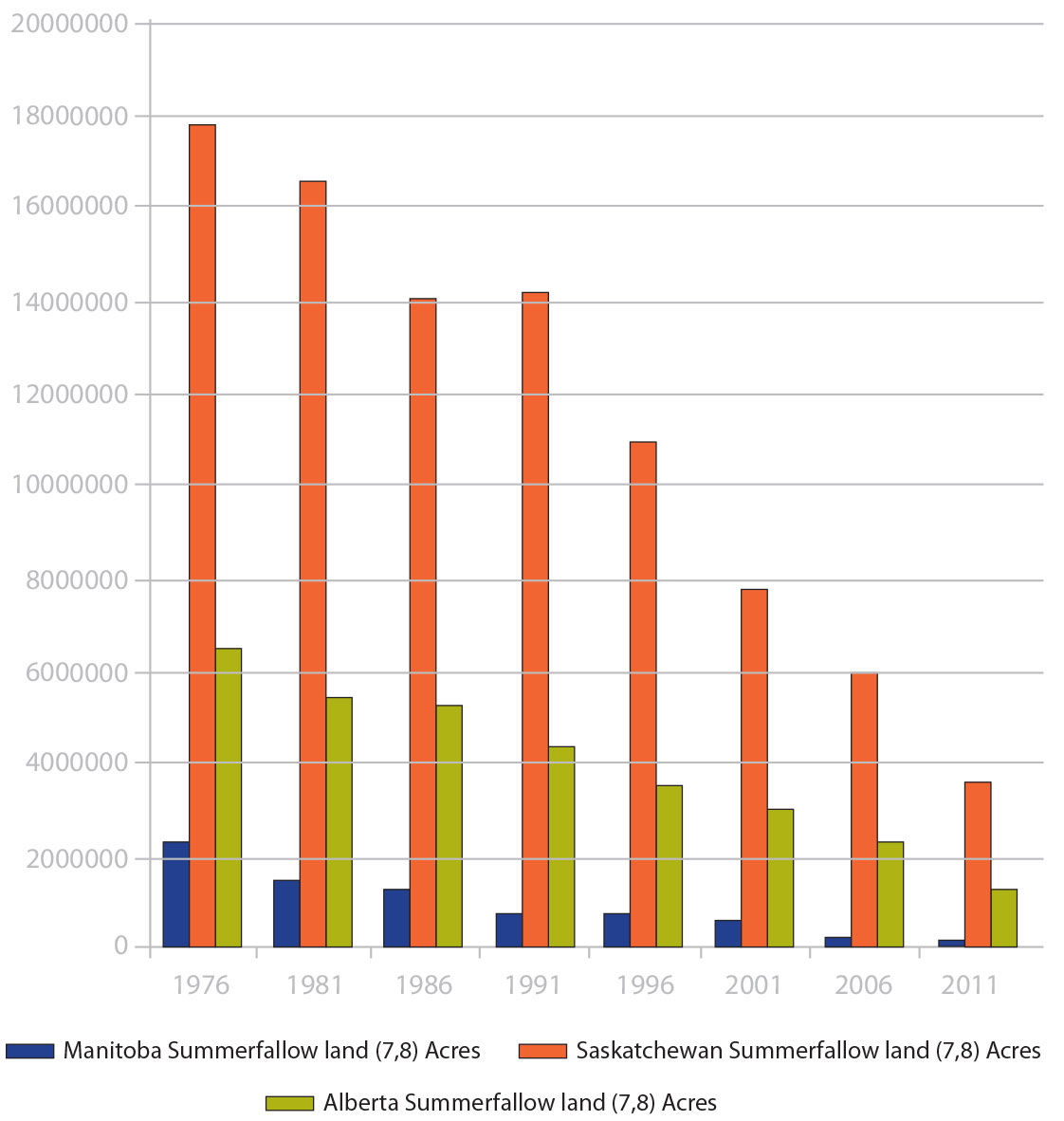
Features
Agronomy
Fertility and Nutrients
Running on empty
Summerfallow acres yield the best with the addition of nitrogen fertilizer. Photo courtesy of Bruce Barker.
There was a time when a wheat/fallow rotation was common on the Prairies, but that practice has caught up to us. Farmers in the Brown and Dark Brown soil zones are paying for the sins of our ancestors. Little did our ancestors, and the “experts” of that era, know they were mining the soil and that summerfallowing would eventually deplete Prairie soil of its organic matter and nitrogen fertility.
“The short answer is that we have mined our soils of organic matter, and if you are growing crops on summerfallow, you now have to apply nitrogen fertilizer,” says Rigas Karamanos, of Koch Fertilizer Canada at Calgary, Alta.
Back when Prairie soils were undergoing conversion to cropland, they were considered to be some of the most fertile and rich in organic matter soils in the world, with organic matter content as high as 16 per cent. By the late 1930s and early 1940s, organic matter had already begun to decline. In 1993, Karamanos, then at the Saskatchewan Soil Test Laboratory, found that soil tests showed a 25 to 75 per cent decline in average soil organic matter levels compared to 1945 levels. And with those declining organic matter levels came a dramatic reduction in mineralizable N in the Dark Brown and Brown soil zones, impacting nitrogen (N) fertility on crops grown on summerfallow.
Today, most soil test labs take N mineralization and immobilization into account when providing fertilizer recommendations. However, crops grown on summerfallow may be under-fertilized because of the depleted organic matter levels in the soils. To test this theory, Karamanos looked at research results found in the Westco database in a three-year trial in Saskatchewan and Alberta from 2003 to 2005. While the trials are 10 years old, Karamanos says the results are still valid today. He published the research in the Canadian Journal of Plant Science in November 2012.
“We knew that crops grown on fallow were responding to nitrogen, but didn’t have much information on the most efficient nitrogen fertilizer rates, on these depleted soils” says Karamanos. “Being able to look at the trials gave us a good indication of the nitrogen response rates on fallow.”
The objectives of this study were to determine yield, quality, N use, and water and N use efficiency of canola and wheat grown on fallow with different rates of N fertilizer. There were six sites initially established – three in Alberta and three in Saskatchewan. The Saskatchewan sites were maintained throughout the three years, but the Alberta sites were reduced to two in the third year and relocated to two different locations. The sites varied from sandy loam to heavy clay soils and ranged in organic matter content from 1.1 to 3.2 per cent.
Two wheat varieties, AC Superb and AC Eatonia, were sown, and Liberty Link InVigor canola hybrids were grown (InVigor 2573 and Invigor 2733). Six N fertilization treatments were applied, as follows: 0, 9, 18, 27, 36 and 45 lb N/ac (0, 10, 20, 30, 40 and 50 kg N/ha) for wheat, and 0, 14, 27, 40, 54, 68 lb N/ac (0, 15, 30, 45, 60 and 75 kg N/ha) for canola. Nitrogen treatments were side-banded at seeding one inch to the side and one inch below the seed with a Stealth opener. All trials received a blanket application of seed-placed P2O5 as triple super phosphate (0-45-0) at a rate of 27 lb/ac (30 kg/ha), and K2O and S as potassium sulphate (0-0-51-17) at a rate of 45 and 15 lb/ac (51 and 17 kg/ha), respectively. All treatments were replicated four times.
Fertilizer N maximizes yield
Application of N fertilizer produced a typical curvilinear response for canola and wheat yields. Karamanos says based on the yield curves that were derived from these experiments, the minimum fertilizer required to produce maximum canola yield of 39 bu/ac (2190 kg/ha) was 76 lb N/ac (86 kg N/ha). Without fertilizer, the canola crop yielded approximately 28 bu/ac. With an N cost of $0.75 per lb and an application rate of 76 lb N/ac, the fertilizer cost would be $57 per acre. At $12 per bushel of canola, the added gross return was $132 per acre, for a net return over N costs of $75 per acre.
Wheat required 42 lb N/ac (47 kg N/ha) to reach maximum yield of 43 bu/ac (2910 kg/ha). Without fertilizer, the average yield was 37 bu/ac. Using the same N fertilizer value and a wheat price of $5.50 per bushel, the net return over N costs at maximum yield was $1.50 per acre – about break even. Maximum N uptake was about 80 lb/ac (90 kg/ha), but canola required 126 lb/ac (142 kg/ha) to reach this rate, compared to wheat at 73 lb/ac (82 kg N/ha). (See Fig. 1.)
 |
|
Fig. 1. Grain yield response to N fertilizer. Source: Karamanos, R. E., Selles, F., James, D. C. and Stevenson, F. C. 2012. Nitrogen management of fallow crops in Canadian prairie soils. Can. J. Plant Sci. 92: 1389-1401.
|
Karamanos says that on summerfallow fields, farmers can benefit from applying N fertilizer, even in drier years. The improvement in both N fertility and water use efficiency can help overcome poor soil fertility, especially on low organic matter soils that have low capacity to mineralize N from organic matter.
This declining soil fertility in areas with historic summerfallowing likely provides one reason why the amount of summerfallowing has decreased. While summerfallow was touted as a means to improve soil moisture, it was also seen as a cheap way to grow a crop without having to apply fertilizer N. With the need to apply fertilizer N, and with better soil moisture conservation through direct seeding and no-till, farmers are moving to more continuous cropping in traditionally summerfallow areas.
Statistics Canada Census data shows an ongoing decline in summerfallow acres, from over 26 million acres in 2006 to about four million acres in 2011, and 3.5 million acres in 2013 (see Fig. 2).
 |
| Fig. 2. Prairie summerfallow acres 1976 to 2011. Source: Statistics Canada. |
“Bottom line is that if you want to improve yields on summerfallow, you will need to pay attention to your fertility plan; [you] can no longer assume that enough N will be mineralized from organic matter to grow a crop,” says Karamanos.
October 7, 2014 By Bruce Barker